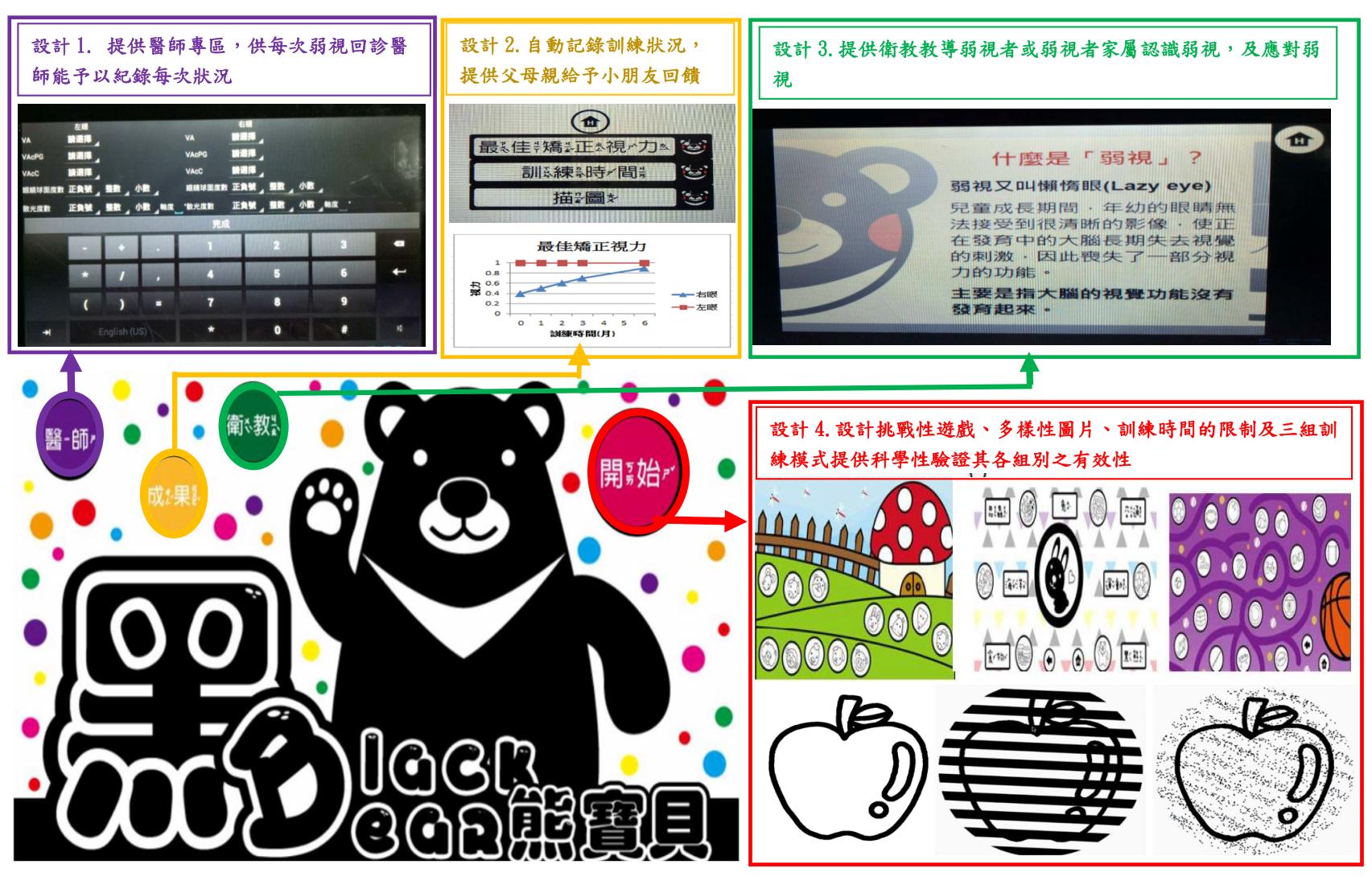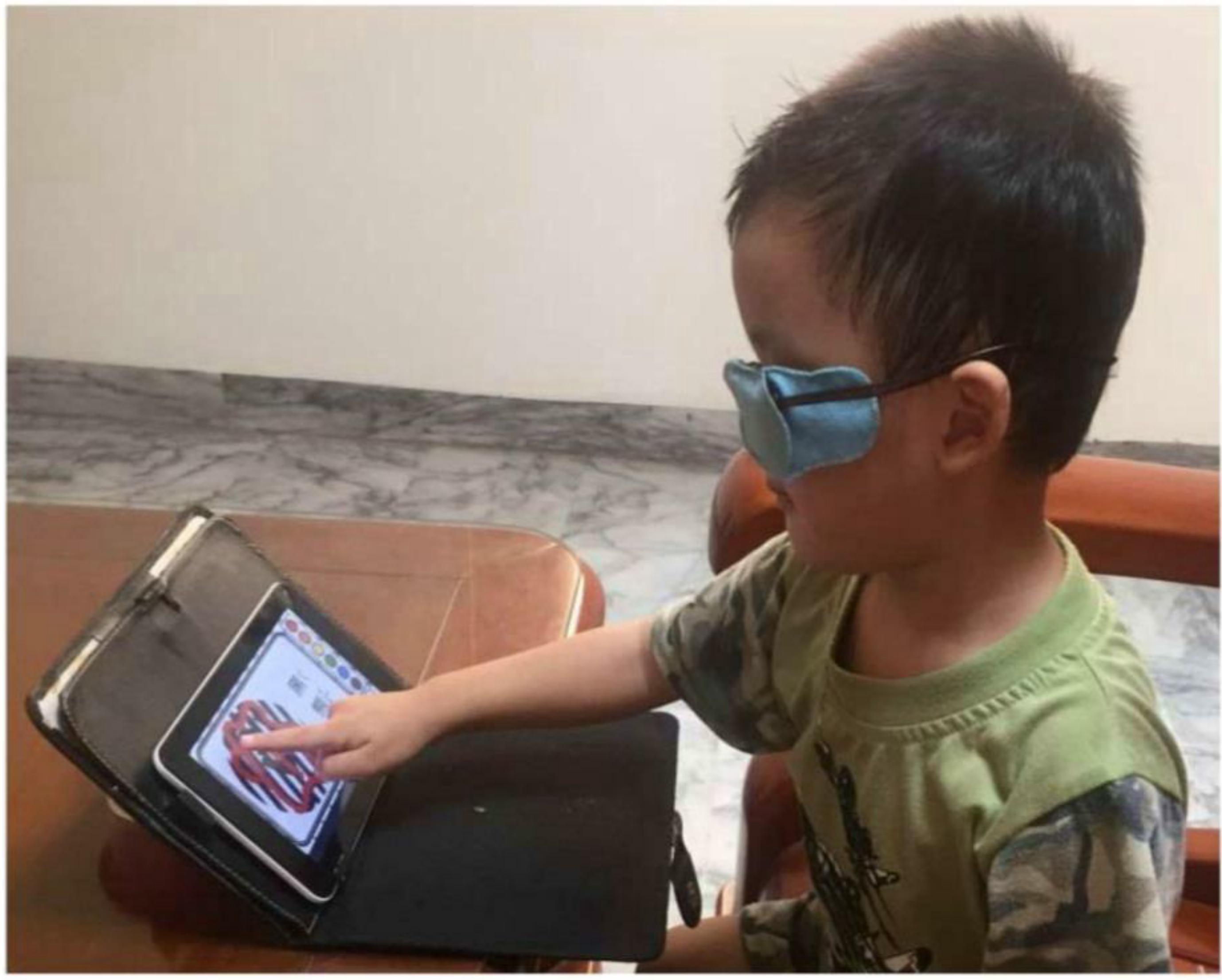| Technical Name | Home-based training for amblyopia | ||
|---|---|---|---|
| Project Operator | National Cheng Kung University | ||
| Project Host | 蕭富仁 | ||
| Summary | A home-based training system was implemented on a general tablet, which was equipped with a 7-inch display. The training element was based on a CAM-like concept. Grating stimuli with various frequencies (1, 2, 4, 8 and 16 cycle/cm) were rotating. The training system contained 1440 pictures and categorized into 12 sets in terms of traditional Lunar Chinese Animals. Each set contained 6 clusters, and each cluster consisted of 20 pictures. When participants exhibited consistency of >70% between drawing and pictures, the training system allowed users to choose a new picture, cluster, or set. Consistency between drawing and picture accompanied by previous records were shown at the end of a daily training. Participants and their parents could explicitly know progress of the eye-hand coordination to promote their learning motivation. Moreover, this system also recorded total training time and total training session as an objective monitoring of amblyopic training. |
||
| Scientific Breakthrough | Participants were randomly allocated into the control, grating, or grating with random-dot groups. All participants received stimulation from a tablet to perform drawing contour of the picture under patch of a better eye for 6 months. Best-corrected visual acuity (BCVA), grating acuity (GA), contrast sensitivity (CS), and visual evoked potential were evaluated at the baseline, 1st, 2nd, 3rd, and 6th months of training. Particularly, the grating with random-dot group exhibited significantly better BCVA, GA, and CS compared with those of the control group at the 1th month of training. Moreover, visual performance of the grating with random-dot group (BCVA) was persistently larger from the 2nd to 6th months of training. |
||
| Industrial Applicability | This training system not only provides a convenience and interest to amblyopia, but allows physicians/nurses to record the patient’s profile, conservation of patient information, and eye assessment on the tablet. In addition, this training system also provides for rehabilitation department of clinic or hospital in individual with visual impairment patients in future, such as stoke patients or etc. In experimental verification for amblyopia, we evaluated diversity indexes for vision, such as VA, GA, and CS. Those indexes are able to obtain more visual information from amblyopia and further are going to improve benefits in amblyopic eye training. |
||
| Keyword | amblyopia contrast sensitivity Cambridge vision stimulator grating acuity visual acuity | ||
- fzshaw@mail.ncku.edu.tw
other people also saw







